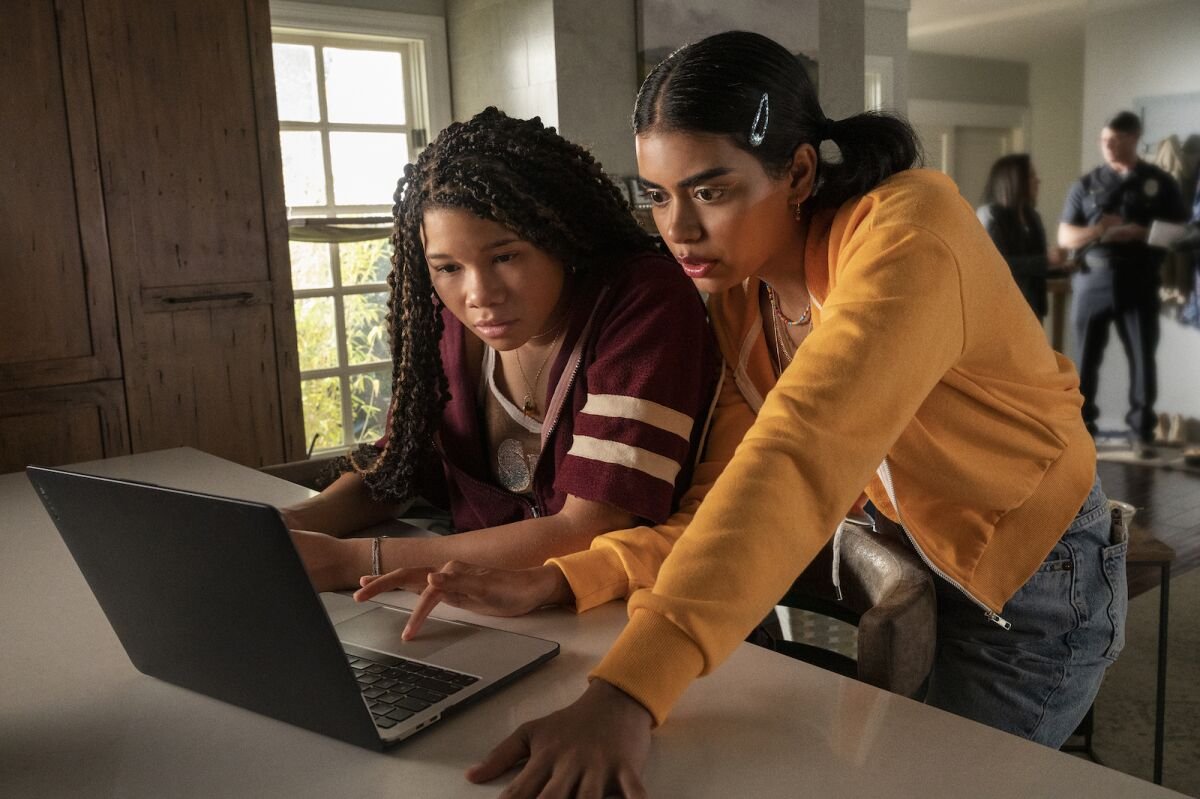Missing
When her mother disappears while on vacation in Colombia with her new boyfriend, June's search for answers is hindered by international red tape. However, as she digs deeper, her digital sleuthing soon raises more questions than answers.
Missing, Will Merrick, Nick Johnson
Upon the release of Aneesh Chaganty’s Searching (2018), it appeared that filmmakers had crafted an entirely new, cheaper, found-footage alternative. Films such as Unfriended (2014), Host (2020), or Spree (2020), taking place entirely on someone’s Twitch stream or (almost always) MacBook screen, saturated cinemas with a camera that remained still, as opposed to found footage’s shaky camera fetish.
Nonetheless, cyber-horrors, scrutinising the real-life horror of information readily at our fingertips, proved ineffective at being the next big thing. Producers, determined to pervade the genre with demonic metaphor instead of honest thrill, failed to see the potential.
However, Missing (2023), a sequel to Chaganty’s cyber-thriller, offers a glimmer of hope, trading saccharine horror for true-crime-obsessed drama. John Cho’s David Kim, whose in-world fame post-Searching has granted him his own Netflix special Unficition, provides the only connective tissue between Searching and Missing outside of the formal gimmick.
Missing follows Riley (played by Storm Reid, late of A Wrinkle In Time and Twelve Years A Slave) as she tracks the disappearance of her mother (Nia Long), and the hyperbolised relationship TikTok and Facebook conspirators have in solving real crimes and swaying public opinion. “Working with Miss Nia Long was a dream,” says Reid. “She is a legend who has paved the way for young Black talent like me, and to work with someone like that is a blessing.” Screenwriter Sev Ohanian is less concerned with shedding light on social media’s investigative competency, but the detriment unlimited information has on influencing real tragedy.
“Screenwriter Sev Ohanian is less concerned with shedding light on social media’s investigative competency, but the detriment unlimited information has on influencing real tragedy”
Ohanian’s screenplay, and Nicholas D. Johnson and Will Merrick’s (the editors of Searching) direction, frame Missing from a fatalistic lens. The entire film takes place from a fixed, second-person perspective leading to a general effect of voyeurism; the equivalent of a two-sentence horror story about the FBI man living in your computer camera. “When we worked on Searching, we made so many storytelling decisions in the editing room that we proved we could do it – we knew how to tell a story like this,” Johnson said. “We were creatively involved in Searching from the very beginning, and I think that is what gave the studio the faith in us to give the opportunity to direct Missing.”
The camera doesn’t place the spectator in the perspective of the protagonists: rather, the spectator is forced to endure; constantly onlooking, it recontextualises how an otherwise reductive, familiar narrative operates. Frequently, the camera zooms in and out to focus on specific clicks, deletes, texts and FaceTimes, but one such dolly zoom towards the third act emphasises the voyeurism and restructures Missing’s entire perspective in a spine-chilling way.
Therefore, framed from a second-person perspective, it is up to Reid to compel the audience. The juxtaposition between Reid’s deft understanding of the technology and Cho’s clueless technological blindness characterise Missing’s runtime. Reid comments, “we live in a social media era. Everything is on our phones. All information is at the tips of our fingers. To experience a movie where you’re using all of the social media platforms that people usually use to solve a mystery is a magical combination.”
The three dots of a message being typed, liking an iMessage — a cause of everyday tension at the best of times — here achieve an even greater pressure under Reid’s commanding performance and forcing the audience to ‘look out’ of the screen instead of in. If Searching is an illustration of those who technology is leaving behind, Missing is a parable on those who are perhaps a little too invested.
Release Date: April 21st, 2023
Director(s) Will Merrick, Nick Johnson
Writer(s) Will Merrick, Nick Johnson
Producer Natalie Qasabian, Sev Ohanian, Aneesh Chaganty, Timur Bekmambetov
Starring Storm Reid, Joaquim de Almeida, Ken Leung, Amy Landecker, Daniel Henney, Nia Long
Cinematography Steven Holleran
Distributor: Sony Pictures Releasing
Runtime: 111 minutes.

